Growing Puppies and Kittens
The primary nutritional goal during growth is to assure full genetic potential where healthy organs, strong muscles, tendons and bones are achieved. Most pet owners have a tendency to overfeed a growing animal. Rapid growth in dogs can often lead to lameness from joint stress or the early onset of hip dysplasia. Overfeeding may also lead to obesity resulting in many associated health issues.
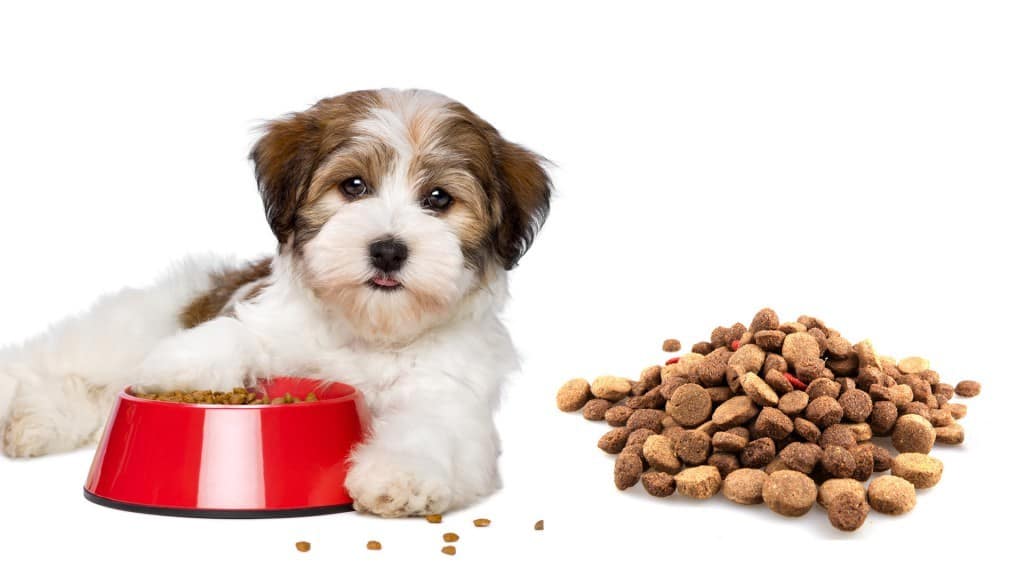
Pet Nutrition Fact: a fat puppy may be cute but it is not a healthy pet. A puppy that is kept slightly on the thin side throughout growth will generally be a healthier dog throughout its life.
Growing puppies require about two times as much energy per unit of body weight as adult dogs of the same breed. The newly weaned dog can easily adapt to this level of feeding, particularly when the food is offered in multiple, judiciously spaced meals. Throughout growth, it is essential that energy be provided in amounts that do not cause a puppy to grow too fast or to lag behind.
Many nutrients like protein, which provides essential amino acids (the building blocks for all cells) must be provided in higher quantities throughout the growth period. Bone, ligament, tendon and cartilage building nutrients are also essential during this period to ensure a strong foundation for an active pet.
Dr. David Kronfeld, a preeminent nutritional expert determined that growing puppies do better when 43% of the total energy requirement is provided by high-quality protein. Such a diet is difficult to find even 20 years after the research was published.
Guidelines to follow when feeding a growing pet include:
- Do not overfeed
- Feed smaller meals more often
- Optimize nutrient content
Adult Pet Nutrition
Adult pets should be maintained in as good a physical condition as possible. Slight underfeeding is recommended. Pets need exercise and fresh water and their nutritional level must be adjusted during periods of stress such as training, performance, work, breeding, injury and disease.
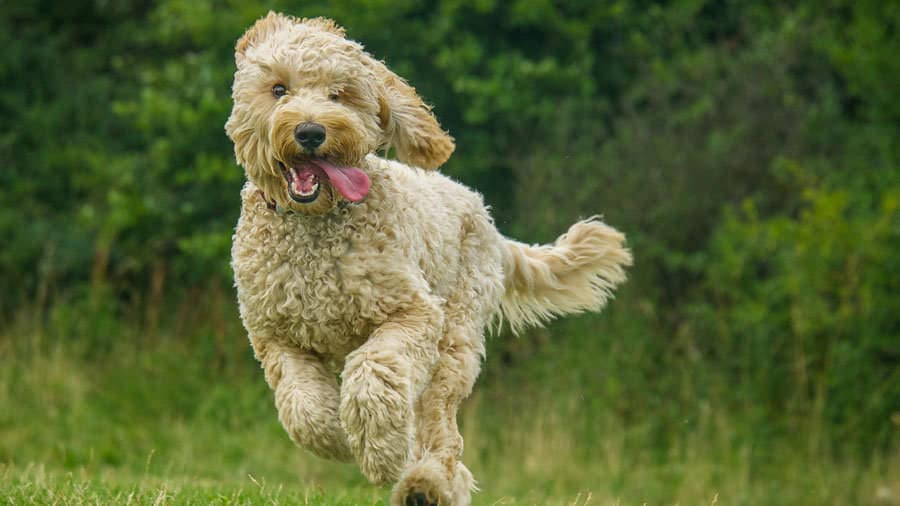
Note: The American Humane Society estimates that more than 9 million of our adult pets are put to sleep annually because their owners, who failed to properly socialize and train them in the first place, no longer want them.
Healthy pets are a large responsibility. For a small amount of money pet insurance is available. Yet! Less than 1% of American pet owners have it. This also leads to unwanted death and suffering as veterinarians and owners make financial choices in the treatment they provide.
Pregnancy and Lactation
Pregnancy is unique in the dog and cat. As the young form in the uterus they remain very tiny until the last few weeks prior to birth when growth rapidly accelerates. First some good news – there is little need to increase food intake until these last few weeks before birth. Now for the bad news — when the mother needs to double its daily intake of food, she has a belly full of kittens or puppies nearing full birth weight pressing on the stomach leaving little physical space left to squeeze this much food into. Yet! Optimum levels of nutrition during these critical weeks are important for maintaining a healthy mother and puppies.
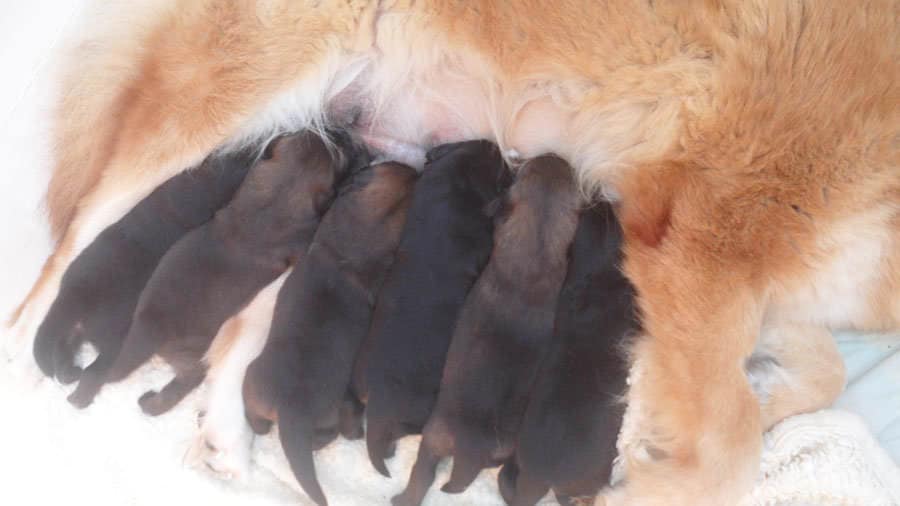
Without supplementation, few mothers get adequate energy or protein just prior to giving birth. This can result in problems affecting the size of the newborn, the amount of milk available and may even be the cause of birthing difficulties.
Lactation poses another major nutritional issue. Feeding a litter of furry newborns is a real test of balancing pet nutrition needs. While energy needs may rise to as much as four times that of maintenance for the average size litter — protein needs may go as high as eight times maintenance in order to provide sufficient quantities of milk. If correct energy and protein needs are not met, then the bitch or queen is left with cannibalizing its own body tissues resulting in excessive organ, muscle mass and hair coat loss.
A quick look at energy and protein needs during reproduction and lactation identifies a big problem in maintaining optimum levels of nutrition with our fixed protein/calorie diets. The numbers represent the amount of increase over that which the pet needed as a healthy adult prior to conception.

With today’s fixed protein/calorie diets, increasing the food intake by 1.4 times would also raise the protein level by 1.4 times. In order to get the protein content to 3.75 times normal you would have to increase the amount of the regular diet by 3.75 times thus providing an excess amount of calories.
Example: My 45 pound Afghan who ate about a pound of food a day before becoming pregnant now needs 1.4 pounds in late pregnancy to meet energy needs|and this when she has a belly full of puppies putting pressure on her stomach and intestinal tract. Then, to keep her muscle and organ tissue intact while feeding her rapidly forming puppies she would need 3.75 times the amount of food normally fed. Where does one think she is going to fit this amount of food?
Now let’s consider lactation where mom has a bunch of puppies nursing around the clock. According to the chart she would need 3.5 times the normal food amount for energy and 8 times the normal amount to fulfill her protein needs. Can you bark the word impossible?
Protein depletion for the last two weeks of pregnancy and six weeks of lactation affects both the health of the mother and her offspring. Without high quality protein, mothers usually experience severe muscle depletion and extensive hair coat loss. When protein levels are deficient the antibody portion of mother’s milk is weakened, which may shed some light as to why 25 — 40 % of our puppies and kittens fall prey to infant mortality and don’t survive the first seven weeks.
Nutritional supplements let you adjust protein levels upward without adding extra volume or calories. This helps feeds the pups while they are growing in the womb, increases the colostrum rich portion of milk, feeds muscle and hair coat systems and allows pups to reach weaning (a high stress period) with a better start in life and a greater chance at becoming a healthy pet.
Reproduction and Diet
Currently, there are no guidelines for pet food manufacturers to use for fertility enhancement, reproduction or lactation. Most of us know how to get ready for an upcoming litter. We save newspapers, build a whelping box, obtain a baby scale, heating pad, rectal thermometer, scissors, towels and bedding. We may have an ultrasound or x-ray to identify litter size but, very often we forget about one of the most critical elements — nutrition.
Current dog foods do little to enhance the breeding capabilities of our dogs and cats. Enhancing sperm production in the male and giving our bitches the best chance to carry a litter and have a fast and speedy delivery requires optimum levels of nutrition. A high protein or raw diet supplemented properly is the optimum way to provide a dog or bitch with optimum reproduction potential.
Senior Pet Nutrition
Senior status is not really a matter of age but physiologic change. These changes become apparent in the toy breed around 14, small breeds at 12, medium breeds at 10, large breeds at 8 and giant breeds around 6 years of age.
Goals of senior pet nutrition:
- Maintain youthful appearance — clear eyes, healthy skin and hair coats
- Maintain active locomotor skills — muscle, ligament and tendon strength
- Maintain normal cognitive function and neurotransmission
- Maintain normal digestive health
- Push back the normal age-related diseases

While there are some scientists and veterinarians that still advocate using lower protein levels in seniors, recent studies have shown that senior dogs need a high protein diet. They have protein needs as high, if not higher than growing and adult dogs.
What is even more important than quantity of protein is the quality or bioavailability of the protein source. A high protein or raw diet would provide the high-quality protein and nutrition that a senior dog needs. Remember, however, that many seniors are less active and often more prone to gain weight. Therefore, it is important for these dogs to have lower fat in the diet. You can minimize the fat by removing the skin from chicken, using leaner cuts of meat and avoiding starchy vegetables and grains.
Pet Nutrition Facts:
- 60% of all dogs over 6 will get cancer according to Pet Life Insurance statistics.
- The most common heart disease today is cardiomyopathy, which has been linked to Taurine deficiency in both the dog and cat. Taurine is abundant in meat sources and is not found in carbohydrate.
- Seniors should be fed a reduced protein diet to prevent kidney disease. This myth began in 1960 and was based on data in the rat kidney. Science disproved this theory in 1979 stating that there is no correlation between protein intake and kidney disease in senior dogs or cats. In fact, the scientists recommended that protein levels be increased in senior animals to compensate for any decrease in digestion and absorption capability.
- 70% of all senior dogs will suffer from some form of arthritis and/or joint disease.
Senior Care
Senior Pets can show physical and mental symptoms of aging, just like their caregivers. The most obvious signs of aging are gray hair on the face and muzzle, slowing down in activities and spending more time sleeping.

Since some symptoms of aging can also be the symptoms of illness or disease it is important to have a yearly health screening. In the case of very senior pets, every six months is recommended.
Some typical tests to run include:
- Full chemistry and blood panel
- Urinalysis
- Thyroid blood panel
Often these tests can indicate the beginning of problems that could become far more serious if left untreated.
If a senior pet displays any of these following symptoms, it is recommended that you have a licensed veterinarian check them as soon as possible:
- Change in water intake
- Increase or decrease in appetite
- Lameness for more than five days
- Bad breath
- Distended abdomen
- Frequent urination
- Increased or decreased weight
- Continually panting and/or coughing
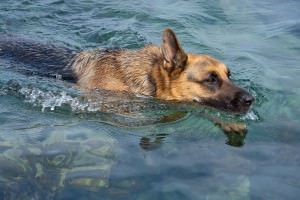
Senior Exercise
While the senior dog becomes less active as they age, exercise is still an important issue. Probably one of the best forms of exercise is a daily walk. Walking helps to keep muscle tone and maintain healthy joints. Dogs needs to be individually assessed for their ability, but even several short walks a day is important for mental and physical wellness.
Swimming is also an excellent low impact therapy and several cities now offer hydrotherapy for dogs with joint pain and loss of muscle tone. Try to keep a daily routine that your senior will look forward to and also give you and your senior priority time together. Try to vary these walks in the neighborhood, to dog parks and special outings by the lake.
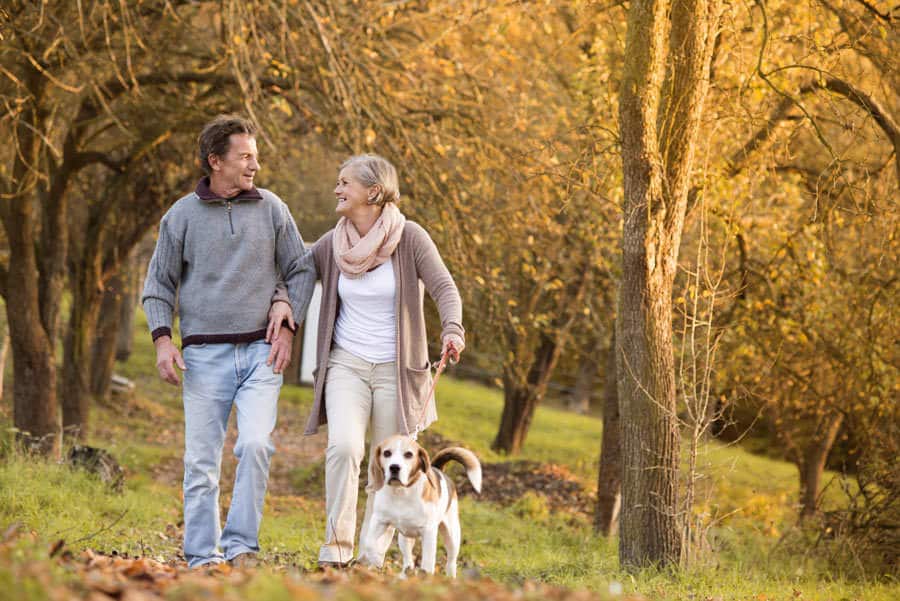
Walking your dog is a great way to get exercise for you and your pet
Grooming
Grooming is of special importance to senior dogs. Often their coats and skin become drier, and bathing can help and also gives you an opportunity to check for any bumps, abrasions or skin changes. A mild shampoo is recommended as to not strip the oil from the skin.
Be observant of the ear canals for any build-up of earwax. Shaking of the head may be a good indication of a pending problem. Older pets have drier eyes and they can develop cataracts. Check their eyes frequently to prevent more serious problems.
Finally, keep the nails short and trimmed. Senior dogs often have trouble with balance and coordination, and long sharp nails can only make their mobility more difficult. If you are uncertain as to how to do this yourself, then a trip to the groomer or your veterinarian to have them show you how will allow you to accomplish this task as often as is needed.
Balancing Health & Nutrition throughout life
The most conspicuous and reliable sign of uncomplicated energy deficiency is a generalized loss of body weight. Parasitism, bacterial infections and disease frequently occur under such circumstances.
A recent study in dogs demonstrated that overfeeding from weaning to old age considerably impairs health and longevity. In this study, osteoarthritis was a special problem in overfed dogs.
Geriatric (senior pet) nutrition should aim at prolonging the length and quality of life and delaying the onset of geriatric dysfunction and disease states.
The decrease in physical activity and metabolism of aging pets results in a reduction of about 20% in maintenance energy requirements compared to young adult animals.
It has long been known that dogs in the wild will adjust their energy intake as the energy density of the diet is increased or decreased. We should not rely on this behavior in our domestic dogs and feed them free choice — that is leaving food out all the time.
Very few dogs or cats can be fed free choice and maintain normal body weight.



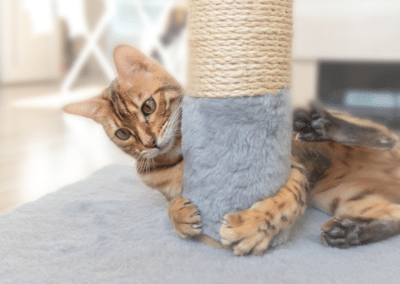



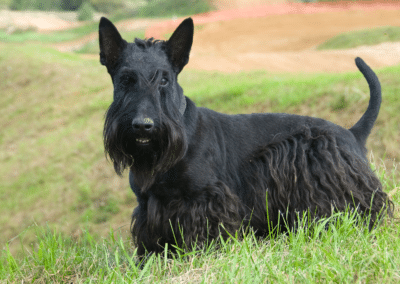

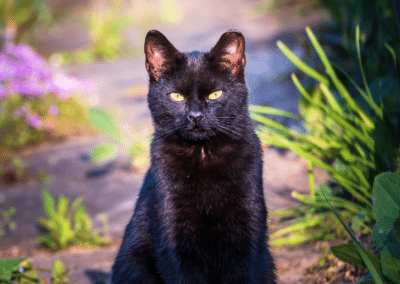

0 Comments